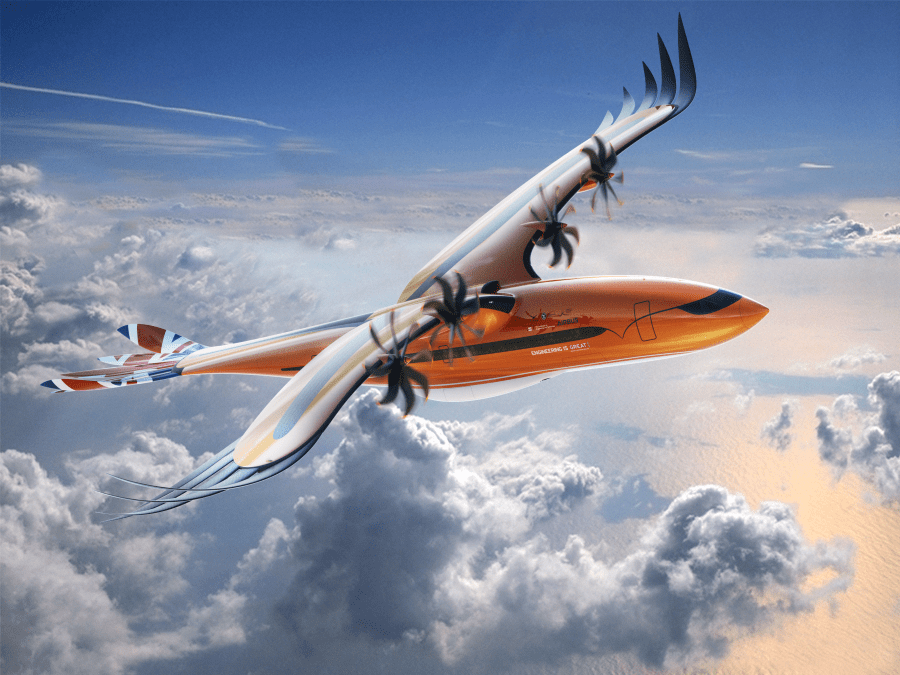Airbus' Bird of Prey concept aims to show the younger generation that engineering is entering an exciting new era explains Mark Bentall, Airbus Technology Head of Operations
THE launch of Airbus’ conceptual airliner – dubbed the Bird of Prey – captured the imagination of those who saw it at the recent Royal International Air Tattoo. It is a stunning piece of engineering design that pushes the boundaries of technology and innovation with its bird-like appearance.
Rightly lauded as a showcase for the aerospace industry’s design credentials, Bird of Prey has an important role too in bringing engineering to life for a new generation of STEM students and early years school children.
In essence, Bird of Prey is intended to spark that ‘wow factor’ with wing and tail structures that mimic those of an eagle or falcon, with individually controlled feathers providing active flight control. The blended wing-to-fuselage joint mirrors the graceful, aerodynamic arch of a bird of prey.

Backed by the GREAT Britain campaign, Royal Aeronautical Society, Air League, Institution of Engineering and Technology and Aerospace Technology Institute, Bird of Prey is an extrapolation of what could be done with technologies that currently form the basis of research within Airbus, like hybrid-electric propulsion to reduce emissions, active control systems and advanced composite structures.
But behind the inspiring biomimicry design which takes its cues from nature, the initiative also seeks to highlight Airbus’ High Value Design credentials and reinforce its position as a global leader of innovation and engineering excellence. This is particularly important at a time when the whole industry is focusing on electrification, automation and reducing environmental impacts. We can help lead the global re-engineering of engineering itself.
Why do we need to do this? Engineering is a complex subject for people on the outside and is often misunderstood, which regrettably means it is often undervalued. Who outside our profession knows that engineering is essentially the clever process that takes science and converts it into products that can be made efficiently, and which society wants?
As we all know, anything people are using or have travelled in has come about by engineers deciding what it looked like, how it’s made and how it performs. That means engineers are influential. But, as products get more complex, the role of engineers is now above the abilities of any one individual. No one person can hope to design and build a product from scratch. Certainly, few organisations have the corporate knowledge to engineer complex products alone.
Just look at airliners. Airframers rely on engineers with a myriad of specialisations to make them fly. Among many others, we need engineers who can reinvent the way we think about aerodynamics, structures and propulsion systems, as well as engineers who can integrate the latest technologies if we hope to design and deliver the breakthrough innovations that will enable a sustainable aviation future.
How then do we develop the skills and processes to achieve this shift? And how do we inspire people to consider engineering as a career path?
Fifty years ago, in July 1969, man first walked on the moon. The same year Concorde took flight. And coincidentally, Airbus came into being in May that same year. Few people who witnessed those events could fail to be inspired by what they saw. Many prominent engineers in this country ascribe the spark that set their lives on course to these events. What would be today’s equivalent? And, how do we reach those people we are hoping to engage with in the modern era?
Bird of Prey could be one of the answers. It has been an exciting journey from initial conception to our unveiling at the world’s largest military air show at RAF Fairford. It shows what can be achieved if we use our imaginations and push innovation to the limits. If even 10% of its features become a reality it will be a worthwhile exercise, notwithstanding the value such an initiative can have in terms of inspiring a new generation of potential engineers.
We want the Bird of Prey to show the younger generation that engineering is entering an exciting new era and that they can make a difference. Most importantly of all, we want these people to think that engineering is for them.
Mark Bentall is Airbus Technology Head of Operations




Red Bull makes hydrogen fuel cell play with AVL
Surely EVs are the best solution for motor sports and for weight / performance dispense with the battery altogether by introducing paired conductors...